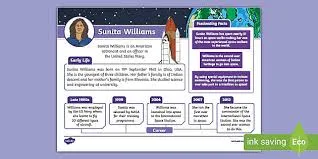introduction
Celebrated astronaut Sunita Williams, who has a long and distinguished career, resides on the International Space Station (ISS) at this time. Officials from NASA recently made news when they said that they are "not in a rush" to return Williams to Earth. This news has generated a lot of interest and conversation, bringing attention to the changing goals of space exploration as well as the sustainability and safety of extended space missions.
The ISS's Comfort and Safety
The announcement that Williams' return is not urgently necessary demonstrates NASA's faith in the security of the International Space Station. This demonstrates the resilience of the station'sinfrastructure and how well its maintenance procedures work. Frequent resupply trips from Earth provide food, medical supplies, and experimental materials, among other necessities, guaranteeing that the crew has all they require for prolonged stays.
Long-Duration Missions' Advantages
There are many scientific and practical advantages to long-term missions on the International Space Station. Researchers can examine the long-term consequences of space travel on the human body by staying in microgravity for extended periods of time. Planning for future trips to Mars and beyond, where astronauts may have to spend months or even years in space, depends heavily on this research. Ensuring the health and well-being of astronauts on these missions requires an understanding of the physiological and psychological effects of extended space travel.
In addition, the International Space Station facilitates international cooperation. Living and working together, astronauts from different nations carry out research that advances humankind as a whole. This cooperative attitude promotes harmonious relationships and cross-border scientific advancement. With her wealth of knowledge and her ability to lead, Sunita Williams is essential to preserving this atmosphere of cooperation.
Astronaut Sunita Williams: A Pioneer
NASA is working to use the International Space Station (ISS) as a proving ground for future exploration, and Williams' mission is a part of that endeavor. She works on the station's systems, conducts scientific investigations, and participates in outreach programs for education. Her presence on the ISS serves as a constant reminder of the human spirit's desire to discover new things and push the envelope of what is thought to be possible.
Obstacles and Things to Think About
Maintaining one's psychological health is another essential component of extended missions. Living in a cramped place far from friends and family can be detrimental to one's mental health. To keep astronauts psychologically fit, NASA offers services for mental health, recreational opportunities, and communication with loved ones.
Prospective Consequences
This method also emphasizes how crucial resilience and adaptation are to space exploration. NASA is preparing for future missions that will send people farther into space than they have ever gone before by proving that astronauts can live on the International Space Station (ISS) for extended periods of time while maintaining safety and comfort.
As stated by Sunita Williams, "Exploring space is about pushing the boundaries of what we can accomplish as a team, not just about reaching new destinations." With pride and expectation, the entire world watches as NASA keeps pushing these boundaries.

